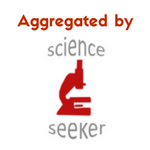One of the most memorable moments of my young scientist career was a Keystone Conference in February 2006 in Whistler, BC where I first heard Professor Shinya Yamanaka describe the successful reprogramming of a skin cell into an induced pluripotent stem cell (iPSC).
I’ve written about this moment on Signals before and taken on the issue of transparency and data sharing because, at the time, Professor Yamanaka simply presented a screen of 24 unnamed molecules, four of which could reprogram cells backwards into an immature state.
For the first time in stem cell biology history, someone was presenting data that demonstrated that cell maturation was not a one way street – e.g., if encouraged by the right molecules, cells could actually be pulled out of the mature specialized state and dropped back into a state where they could make any cell type of the body. This was shocking news to many senior scientists at the Keystone conference and the impact was palpable. Maturation was supposed to be unidirectional – a series of on/off switches that activated or shut down cellular programs. Imagine having such a foundational belief turned on its head! It was that kind of moment: the earth was not flat.
I regularly describe this pivotal moment with new students since they didn’t “live it” and have instead grown up with iPS cells in their lectures, courses and practical workshops. The lesson being: you need to be open to the idea that your most rigidly held scientific belief might be wrong….
What impact did this new data have in 2006 when it was published? Well, it inspired the discovery in human cells of the same phenomenon (the original study was in mouse cells) and it launched an incredibly boring period of technical optimization that dominated conferences for the next five years.
This journey of a field highlights a major theme for non-specialist readers of this blog – scientific progress. Even with thousands of scientists working on the same general thing it takes time – heaps and heaps of time. Ideas are tested, re-tested, validated internationally and only then – if the target market is sufficiently large/lucrative – will it be adopted by companies and individuals for potential patient delivery.
So, if much of the optimization legwork is behind us, where do I think regenerative medicine is headed in the next 10 years? Well, I think there is a lot of excitement and a lot of heartache ahead.
The excitement comes from the fact that just about any disease can be modeled with iPS cells so we can increase our understanding of the molecules involved and how they interact with various drug combinations. Furthermore, many approaches have already been formally demonstrated to work in animal models (e.g., production of functional insulin producing cells (for diabetes), production of platelets (for numerous blood disorders)), and even if only a handful of these translate to human patients, the impact will be incredible.
But the latter is also where the heartache will come. Very few diabetes patients will be comforted by the fact that iPS cells have successfully produced insulin producing cells and they may have to wait decades or may never see a therapy that will work. Even more pressing is the experimental validation period that will have to be endured. Clinics will have to run safety trials, which may go badly, therapies will look very exciting in models or even early trials, but they simply may not work when tested in large numbers of patients.
Most importantly, we don’t yet understand the biology of an iPS cell. The process induces major genetic and epigenetic changes that may lead to worse diseases than the ones that clinicians are trying to treat. We all hope this won’t happen, but with the speed, investment and enthusiasm for cell therapies, I am sure that we will have such cases and I hope that the community takes its time with these new and poorly understood approaches to get things right more often than wrong.
I always remind people of the gene therapy trials of the early 2000s, which were extremely successful for what they set out to do – cure an immunodeficiency disease – but ended up causing cancer in a large proportion of children because the technology was not yet fully understood. This set the field back for a decade and only now is enthusiasm building again.
It has already been a wild ride for cellular reprogramming and much more excitement is still to come. This technological approach is definitely here to stay and has massive clinical potential. However, it is exactly that – a technological approach – and we would be foolish to think that iPS biology equates normal cell biology, meaning that we still require huge investment into researching genetically non-manipulated cells (patient samples, normal tissue from model organisms and people) to work out the nuts and bolts of how cells grow and how they get subverted to drive disease. We cannot afford to forget about the basic science behind each and every one of these clinical applications.
My blog is just one of many covering this topic as part of the iPSC anniversary blog carnival. Please click here to read what other bloggers think about this.
David Kent
Latest posts by David Kent (see all)
- Breaking down barriers between industry and academia to accelerate gene therapy - August 22, 2023
- Reversing aging: Not just a single system to consider… - August 25, 2021
- Regenerative medicine and COVID-19: The search for a silver lining - August 26, 2020






Comments